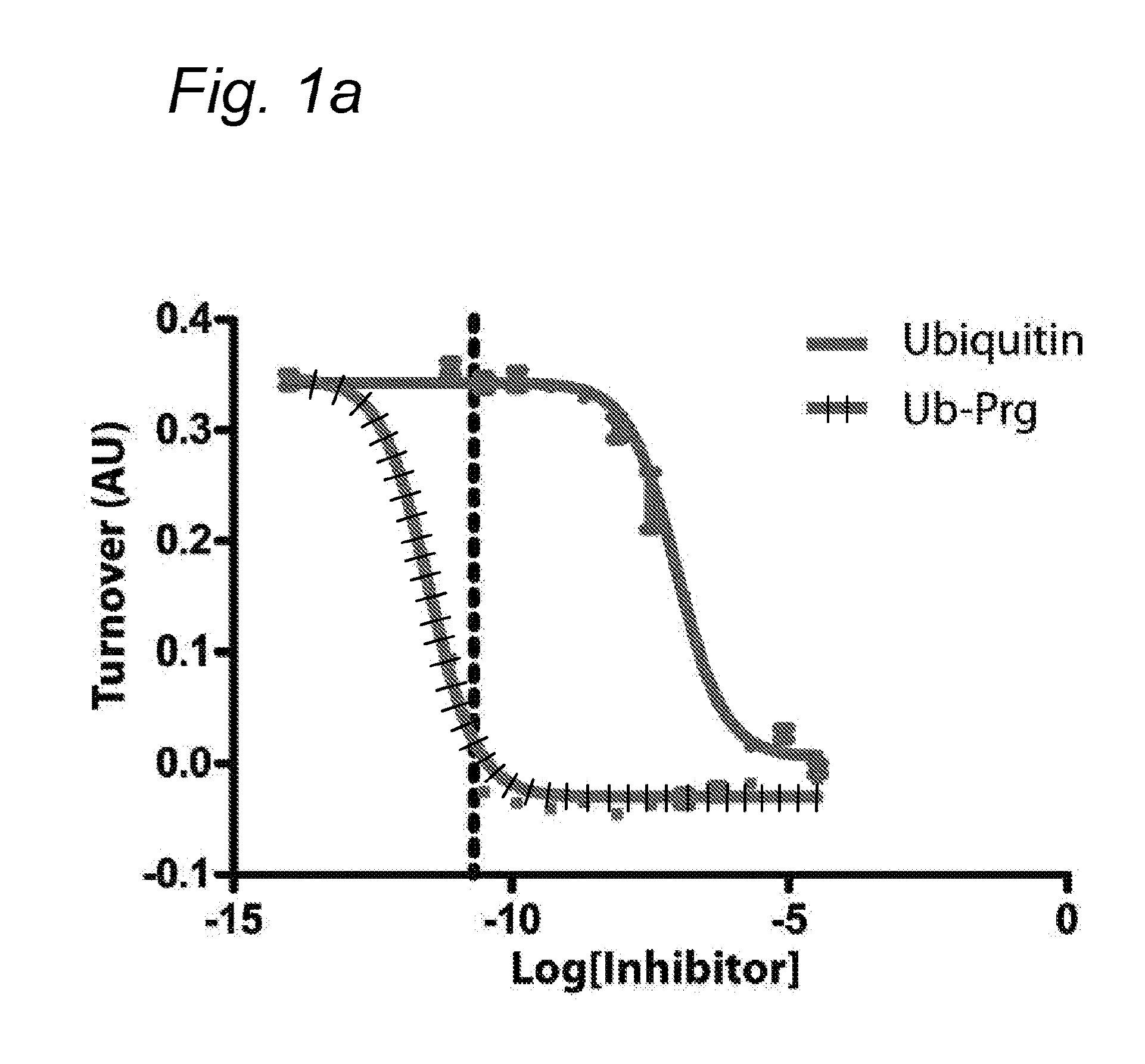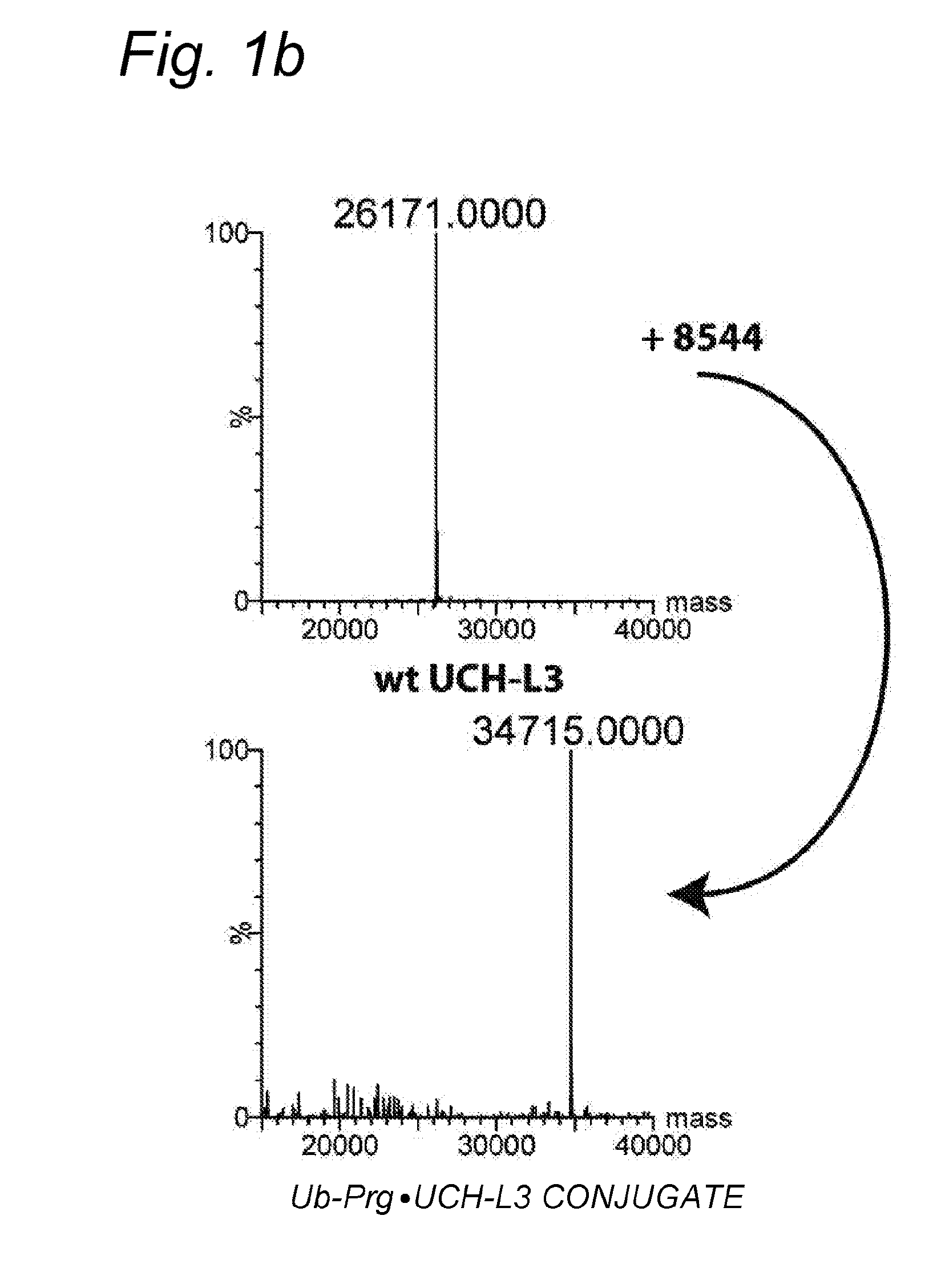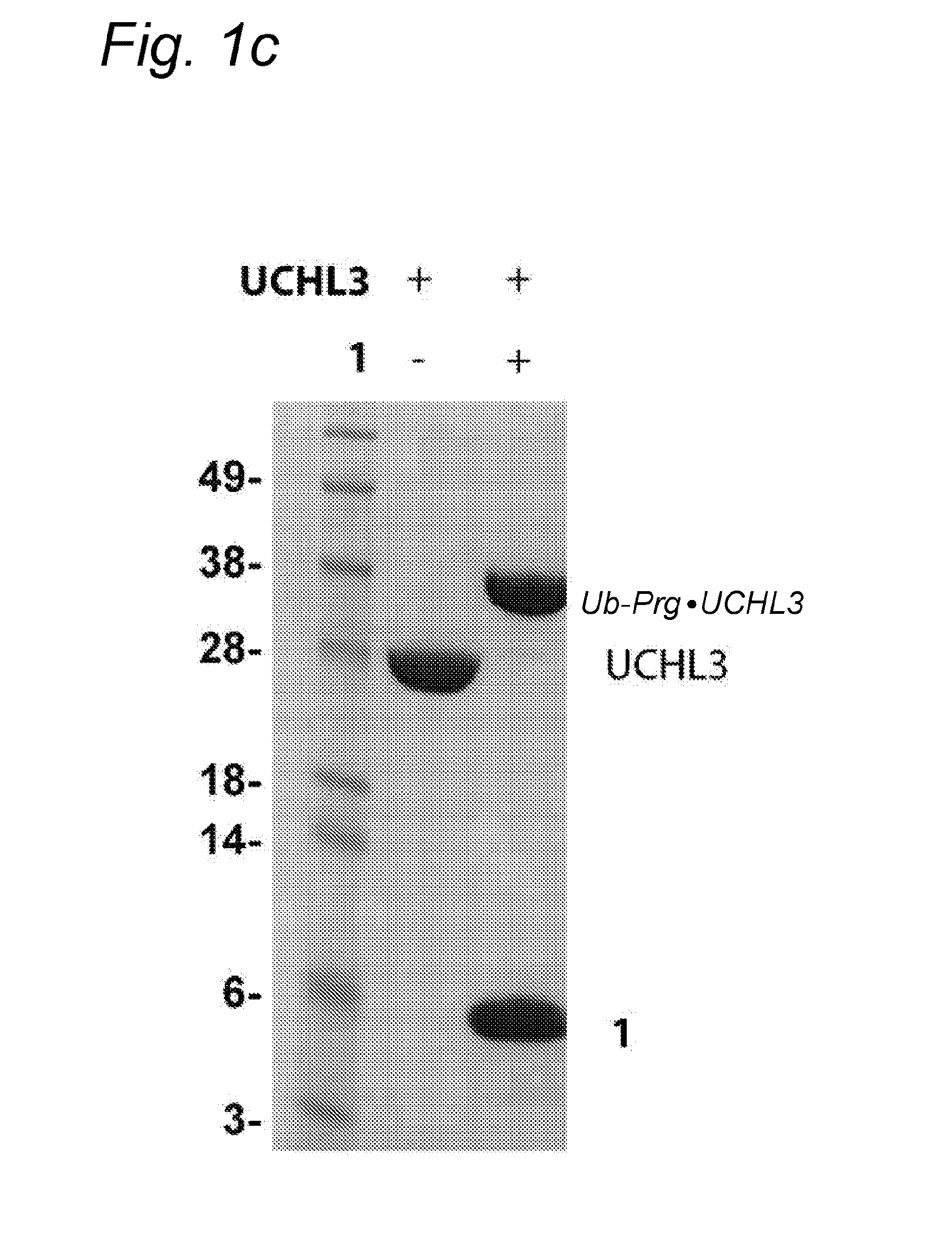Cysteine protease capturing agents
a technology of cysteine protease and capturing agent, which is applied in the field of capturing agent of cysteine protease, can solve the problems that none of the cited documents discloses or even suggests the activity of click-chemistry reagents
- Summary
- Abstract
- Description
- Claims
- Application Information
AI Technical Summary
Benefits of technology
Problems solved by technology
Method used
Image
Examples
example 1
y of Alkynes with Active-Site Cysteines—Novel Active-Site Directed Probes to Study Deubiquitination
[0071]Bioorthogonal reactions, such as “click reactions” have proven powerful tools to study protein function. However, the bioorthogonality of various click chemistries is not complete.
[0072]Here it is demonstrated that inert bioorthogonal non-strained alkynes can react with nucleophilic thiol residues, such as those found in active sites of cysteine proteases.
Materials and Methods
General:
[0073]General reagents were obtained from Sigma Aldrich, Fluka and Acros and used as received. Peptide synthesis reagents were purchased from Novabiochem. LC-MS measurements were performed on a system equipped with a Waters 2795 Separation Module (Alliance HT), Waters 2996 Photodiode Array Detector (190-750 nm), Phenomenex Kinetex C18 (2.1×50, 2.6 μm) and LCT™ Orthogonal Acceleration Time of Flight Mass Spectrometer. Samples were run using 2 mobile phases: A=1% CH3CN, 0.1% formic acid in water and B=...
experiment 2
SENPs with SUMO-PRG Peptides
[0106]SUMO attachment to its target is similar to that of ubiquitin (as it is for the other ubiquitin-like proteins such as NEDD 8). A C-terminal peptide is cleaved from SUMO by a protease. In human these are the SENP proteases.
[0107]The following experiment was performed to confirm that propargyl modified SUMO peptide (fragments) in accordance with the invention are selective capturing agent for the corresponding SENPs. The following SUMO peptides and SENPs were used in the Experiment.[0108]SUMO peptides:[0109]SUMO1=Cy5-PEG4-YQEQTG-PRG[0110]SUMO2,3=Cy5-PEG4-FQQQTG-PRG[0111]SENPs:[0112]GST-SENP1 (43 kDa)[0113]SENP6 (33.1 kDa)[0114]SENP7 (37.2 kDa)
[0115]The SENPs (1 μM final concentration) were incubated with the SUMO-PRG peptides (50 μM final concentrations) for 1 hour at RT in buffer (20 mM Tris, 100 mM NaCl, 1 mM DTT, pH 7.5). Samples were denatured using 1× LB and boiled for 5 min. As a control, the SENPs were denatured (1×LB and 5 min. boiling) prior ...
experiment 3
Caspase-1 Probe
[0117]The following experiment was performed to confirm that the invention is generally applicable to other types of cysteine protease. For this purpose (C-terminal) propargyl modified fragments of Il-1 β, a natural substrate of caspase-1, were prepared, following the procedure schematically depicted in FIG. 5, and the capability of these probes to selectively capture caspase-1 was evaluated.
(S)-Tent-Butyl 3-((Tert-Butoxycarbonyl)Amino)-4-Hydroxybutanoate (2)
[0118]Boc-L-Asp(tBu)-OH DCHA salt (18.8 g, 40.0 mmol) was dissolved in THF (40 mL) and cooled to −10° C. N-methylmorpholine (4.62 mL, 42.0 mmol) was added and the reaction was stirred for 5 minutes. Isobutyl chloroformate (5.45 mL, 42.0 mmol) was added drop wise over a period of 10 minutes and the reaction was stirred for another 30 minutes. Next, the solids were removed by filtration over a pad of Celite and the filtrate was collected in a cooled (0° C.) solution of NaBH4 (3.0 g, 70.0 mmol) in water (80 mL). The ...
PUM
| Property | Measurement | Unit |
|---|---|---|
| Length | aaaaa | aaaaa |
| Selectivity | aaaaa | aaaaa |
Abstract
Description
Claims
Application Information
 Login to View More
Login to View More - R&D
- Intellectual Property
- Life Sciences
- Materials
- Tech Scout
- Unparalleled Data Quality
- Higher Quality Content
- 60% Fewer Hallucinations
Browse by: Latest US Patents, China's latest patents, Technical Efficacy Thesaurus, Application Domain, Technology Topic, Popular Technical Reports.
© 2025 PatSnap. All rights reserved.Legal|Privacy policy|Modern Slavery Act Transparency Statement|Sitemap|About US| Contact US: help@patsnap.com



